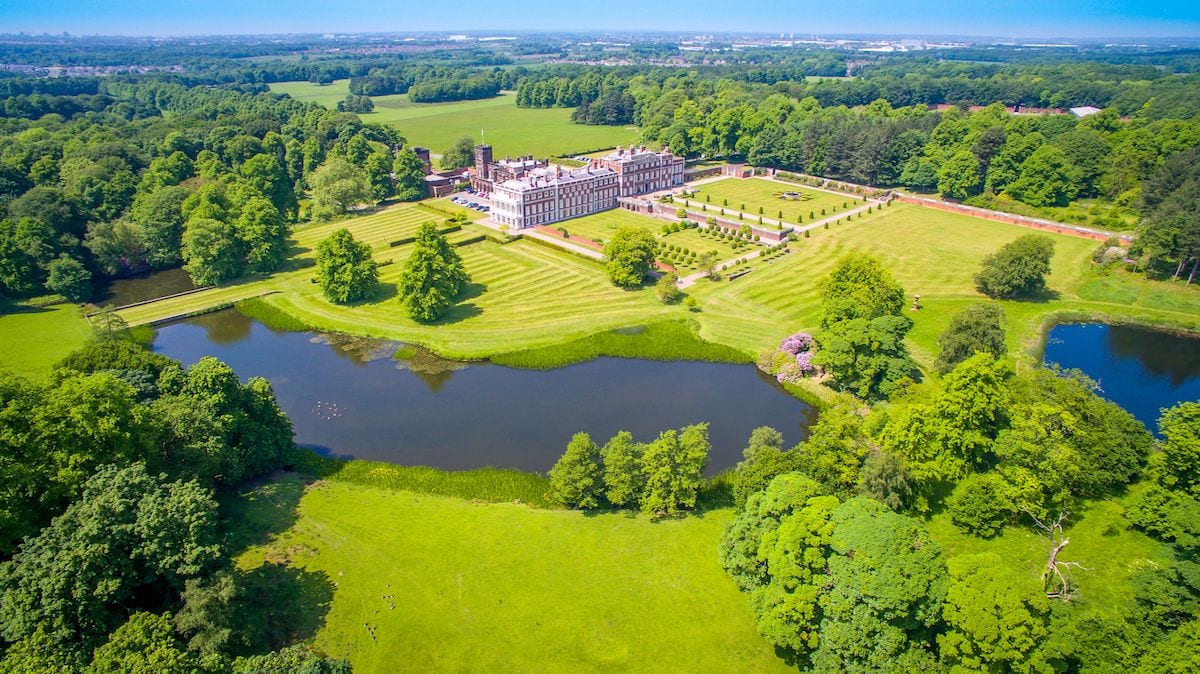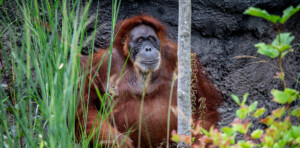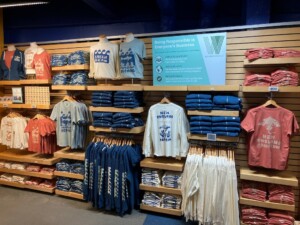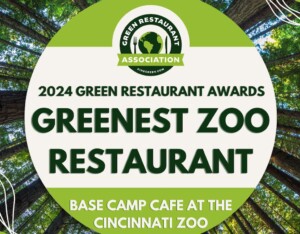Knowsley Safari, one of the North West’s leading attractions, has been welcoming visitors for over four decades.
Edward Perry, Director of Operations at Knowsley since 2012, spoke to Blooloop about the role of safaris in both conservation and the community. And, why the experience is as important as the animals.
 A Perfect Tonic
A Perfect Tonic
Perry left school at 18 and served with the Coldstream Guards before running a small printing company:
“It was a perfect tonic for leaving the Army actually, because it was just a big wide commercial world.”
Perry then had what he calls his ‘academic guilt trip’, and went to university, studying Heritage Interpretation & Environmental Education at Birkbeck College, University of London from 1993 – 1995.
“At the same time I had a fantastic opportunity. I worked for a very brilliant, but mad, professor in experimental archaeology. Most archaeologists, particularly in the early 90s, would look at the past two-dimensionally, creating plans with post-holes and various other artefacts.”
Experimental Archaeology at Butser Ancient Farm
 “What we did with experimental archaeology at Butser Ancient Farm in Hampshire, was to express these two-dimensional pieces of evidence in three dimensions. We crafted pottery, we built roundhouses, we ploughed with oxen, we grew prehistoric wheat crops.
“What we did with experimental archaeology at Butser Ancient Farm in Hampshire, was to express these two-dimensional pieces of evidence in three dimensions. We crafted pottery, we built roundhouses, we ploughed with oxen, we grew prehistoric wheat crops.
“I was the education officer there for about four years. It was the perfect anti-establishment role, having spent eight years as a soldier. I met my future wife there. But, eventually I thought, I can’t carry on like this. I hadn’t worn a suit for years, I had hair everywhere.”
Perry took a year out. He worked for the National Trust before managing Kelmarsh Hall in Northamptonshire.
“I was tasked with transforming this beautiful house which was full of potential, but rather backward and unprofitable, into a going concern. Fast forward to now: it does weddings, it does concerts, it does a very good game fair that I set up.”
A New Role at Knowsley
In his forties by this stage, Perry felt he still had a long way to go.
“And then, in 2004, I was called by a head-hunter saying that there was a new role at Knowsley Hall near Liverpool.”
The move meant uprooting his family from an idyllic rural life in Northamptonshire.
“It was a bit of a culture shock, ” he says.
Knowsley Hall is a magnificent stately home complete with (non-resident) family, art collection, and surrounding parkland. It is not open to the public but is used as a venue for hospitality and events.
“It’s really top end accommodation and top end events; we tend to cream off the celebs and the A listers, the individuals who want to do a corporate or private entertainment in the Liverpool city region.”
He had been running the Hall for two years when a call came from Lord Derby, in 2008, asking him to transfer to the Safari.
“It was a leadership role that was required, that could balance the often opposing and contrasting needs of the animals, the teams that look after them, and the commercial side.”
The Circus Connection
 “Safaris and zoos come from very different cultures. The safari’s genesis really comes from the circus sector. In the late 60s and early 70s, circus impresario, Jimmy Chipperfield (left), went to these landed peers of the realm with a proposition.
“Safaris and zoos come from very different cultures. The safari’s genesis really comes from the circus sector. In the late 60s and early 70s, circus impresario, Jimmy Chipperfield (left), went to these landed peers of the realm with a proposition.
“Many of these peers weren’t particularly commercially oriented; they had finished the war to manage their estates, but post-war Britain wasn’t particularly kind to landed estates. Jimmy Chipperfield seemed a blessing to many of them.”
One of those peers was Edward Stanley, 18th Earl of Derby, who opened Knowsley Safari with Jimmy Chipperfield in 1971.
Knowsley’s situation gave it an immediate advantage. Not only could it tap into the population of a large city, it was also 20 minutes from Liverpool’s waterfront, 35 minutes from the centre of Manchester and within a stone’s throw of the M62.
“In the late 60s and early 70s, your average worker, your average resident, was never going to go to Africa. This was an extraordinary venture: bringing Africa to the English countryside.
“Safari culture was very much based on that African experience, and the management was essentially white, male, middle-class, and ‘Out of Africa’: very different from the zoo leadership, which tended to come from a keeping or scientific background.”
This world still existed at Knowsley in 2008.
“I felt that Knowsley had, in a way, built a wall around itself, by sticking to the traditional audience, the traditional market, ” says Perry.
He immediately set about addressing several issues that were barriers to growth.
The model of many leisure attractions post-war, including Knowlsey, was to accept losses in the off-season. The hope was that things would pick up in the spring half term, or failing that, Easter. Another factor was that the park was relying on exotic animals to show themselves at the right time, at weekends, the half term, or in the holidays. It was seat-of-the pants economics.
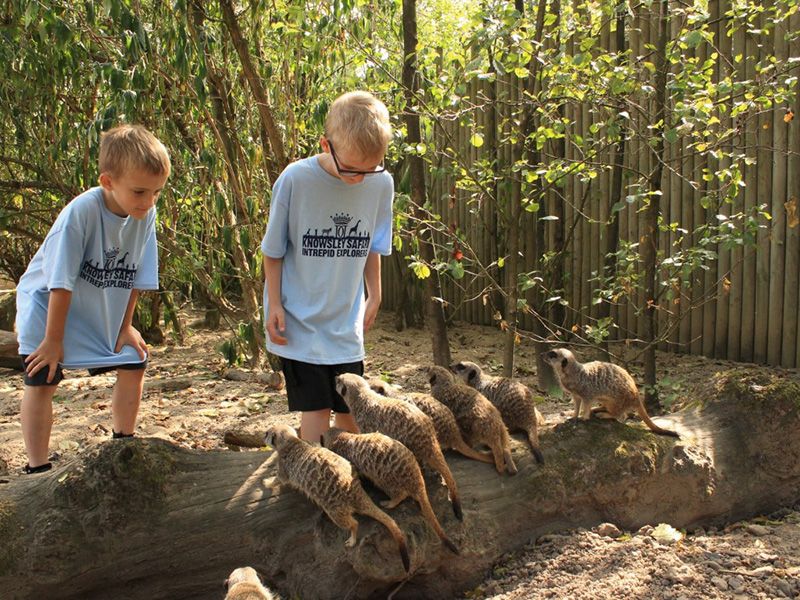 Preserving the DNA of a Safari Experience
Preserving the DNA of a Safari Experience
“I needed to recruit a commercially oriented, highly professional, highly motivated, diverse senior management team to lead the way, ” says Perry.
Despite the need for change, he was determined to keep the DNA of a safari experience.
“Safari means, ‘come on: let’s go on a trip, an adventure.’ The brand proposition is ‘truly wild adventures’.
“In other words, each time you come you can do something different. There has to be a frisson of excitement. And, you do get that. After all, you are a window’s width away from a lion. You have primates jumping all over your car.”
A key priority for Perry was to move away from the conventional African theme towards more northern species.
“Now, we have European bison; there will shortly be forest reindeer; we are looking at bears; we have Tibetan Kiang. What we have successfully done is to iron out those peaks and those troughs and to eliminate those loss months.
“Something we hope to be doing in the next two years is taking advantage of all the festivals and commercial opportunities – Christmas, Hallowe’en and so on, that lots of zoo attractions are doing really well.”
Last year, Knowsley attracted 600, 000 visitors, 20, 000 of whom were schoolchildren. But, says, Perry, to be a successful attraction nowadays takes more than just numbers through the door.
“It’s not just a numbers game. It’s got to be a qualitative game as well. We are developing measures to analyse not only the quality of our experience, but also the emotional and spiritual outcomes of visiting a wildlife attraction.
“Now, it’s more about turnover; it’s more about spend per head. So, we are now looking at a very different approach to our communities, a very different approach to the commercial model, a very different approach to the health and well-being agendas and the ethical and the welfare side.”
 Inviting the Community In
Inviting the Community In
In 2012, Knowsley Safari changed its mission statement to ‘Connecting communities to the natural world for the benefit of future generations’.
“Those words are really important, ” says Perry. “Connect is an informal introduction. We are not going to ram facts down your throat. We are going to make it fun. And, if you like that, then we are here if you want a little bit more knowledge, and we will guide you through the process.
“It is not Africa; it is about the natural world, and the natural world can be microscopic, or it can be cosmic as well. And communities, as well, are very important.
“We have come a long way from the traditional 70s model, to something that is more socially aware, ethically aware. It is about stepping out of the confines of the wall of the traditional zoo, and inviting the community in.”
Fewer Species, Larger Herds
 Africa is still very much represented at Knowsley, of course. There are lions and elephants. The rhino herd is one of the most successful and genetically diverse breeding groups in Europe. What is absent is the Great White Hunter mentality that underpinned safari parks at stately homes for so long. Safari now is about conservation, and communicating conservation messaging.
Africa is still very much represented at Knowsley, of course. There are lions and elephants. The rhino herd is one of the most successful and genetically diverse breeding groups in Europe. What is absent is the Great White Hunter mentality that underpinned safari parks at stately homes for so long. Safari now is about conservation, and communicating conservation messaging.
“You can fit Chester Zoo in our rhino enclosure, which just gives you a sense of scale. I think some of those traditional Victorian footprint zoos are doing a really fantastic job in providing the welfare and the experience to the guest, but the safaris have the space. What we are doing, like a lot of other safaris, is not about species collections: it’s about habitats. Therefore, we are able to have fewer species, but larger herds.
“There is no better sight than going to Longleat and seeing their herd of 14 or 15 giraffes. There is no better sight than coming to Knowsley and seeing nine white rhino, not just packed into a tiny little paddock, but behaving naturally.
“What’s even better is that you will then be able to see a young, frisky wildebeest, or a zebra, almost challenging or taunting the little baby rhino, and then the rhino mum just booting the little wildebeest zebra out, while the eland just watch nonchalantly.
“So, there are moments, in the rhino section, for example, when you can see five species all grazing very happily, and you think, why go to Africa? So, I think safaris are in a perfect position to play their role in species conservation.”
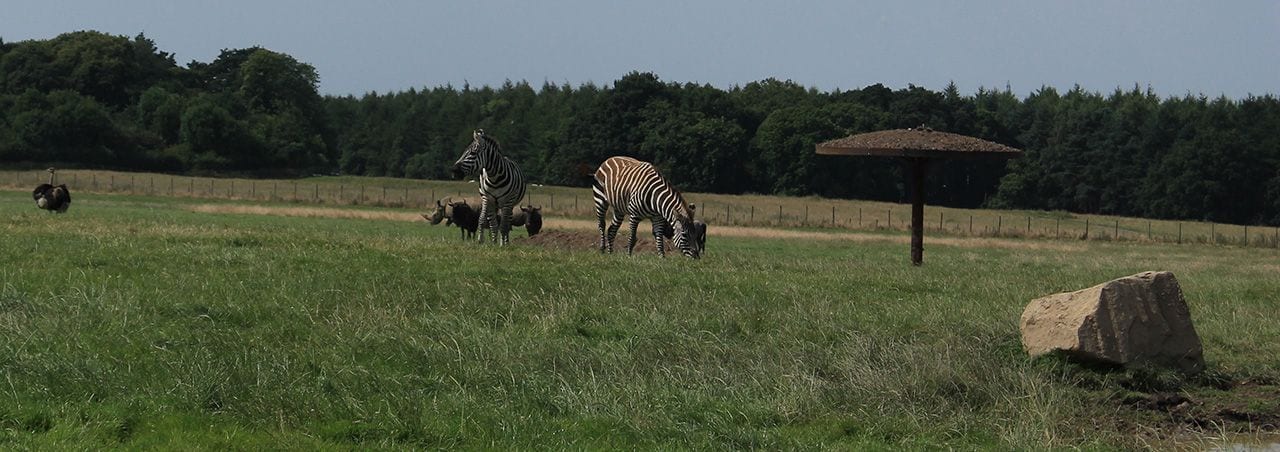 Staying Relevant
Staying Relevant
Native species have their place at Knowsley, too. There are, for instance, red squirrels. Perry believes that to lecture about the plight of African species to a family living in a high-rise is to risk losing relevance.
“Knowsley itself has sat very firmly in the bottom of the education league tables for the last few years; there are social challenges.
“It is better to start in the kitchen, to start in the garden, or with a species or an animal that they can understand or connect with, perhaps through literature. Maybe it’s The Gruffalo or Edward Lear, whose appeal is, of course, timeless.”
(There is a connection between Knowsley and Edward Lear, who was commissioned to paint animals from the Knowsley menagerie in the 19th century.)
“There’s that lovely saying that you can start with an acorn, and end up explaining the history of the universe, ” says Perry.
“What we’re trying to do is to engage people. The danger with a lot of biodiversity institutions is they start with the scientific angle, and disconnect with the guest.”
Accidental Learning
 The new tiger enclosure is typical of what Perry is working to achieve.
The new tiger enclosure is typical of what Perry is working to achieve.
“We call it the tiger trail: the words ‘park’ and ’enclosure’ do suggest a containment of the animals.
“I said to the architect: actually, you’re not designing a tiger trail. You’re designing an experience. If a family went all the way round the trail and didn’t see a tiger once, they’d still say: wow.
“In other words, it’s not about the animals. It’s about the bigger picture, the vegetation, the birds that flit from tree to tree, the ecology, in the proper sense. It’s almost accidental learning. That’s really what we’re trying to achieve. And I think, again, safaris are really well placed for that way of teaching.
A Closed Loop System
Other pipeline projects include a walk safari and the new elephant house.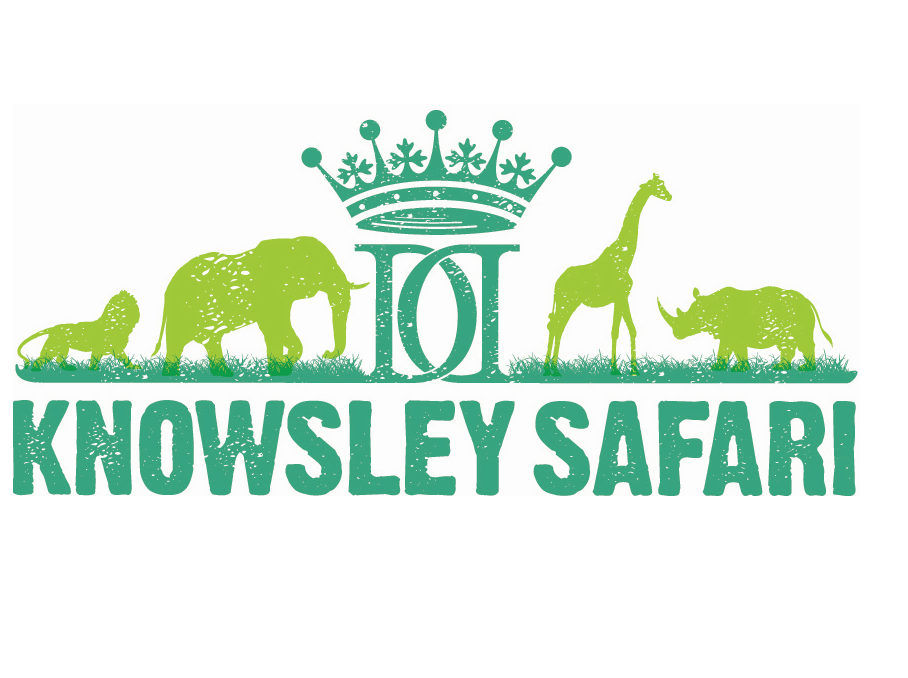
“The elephant house is a really exciting opportunity, ” says Perry. “It’s easy to look at these animal houses and think, they cost a lot of money: it’s like digging a hole and shovelling cash into it.”
Perry is keen, however, to create an elephant house which promises a return on the investment. He is exploring renewable energy from waste.
“We’re big fans of the closed loop system. In other words, you recycle everything.
“And, I think elephants are a classic example of being able to recycle. And then, if that elephant house then has guest access, it gives you an all-year round opportunity which, therefore, is incremental revenue.
“You can then have a café or, even better, a conference room, above the elephants. Then, you’ve got a revenue-making machine.
“There’s also an interesting concept I was discussing yesterday with Mike Maunder, (Dr. Mike Maunder, Executive Director of The Eden Project). He was talking about building places with a biodiversity debt, in other words, getting a return in animal conservation terms.
“An elephant house may cost £2million, but we need to ask, are we in credit with biodiversity? We need to be looking at that evaluation.”
 Using VR to Bring Nature to the Community
Using VR to Bring Nature to the Community
He is a keen proponent of the benefits of bringing nature to the community.
“Research is really beginning to show contact with nature is hugely beneficial. We’ve been working with Alder Hey Hospital for children, and thinking about how we can bring Safari into the wards.”
The answer is through virtual reality.
“In effect we do 3D photography and video, then it gets churned through the software, and the children on the wards put on their goggles: it’s a fantastic experience.”
Knowsley Safari has had a very good few years since the recession.
“This year, we are looking to attract three quarters of a million. This has entailed about £1 million in infrastructure changes: new roundabouts, making the landscape better, making the signage better, making a better experience.”
Analysis of digital marketing shows that conservation messaging has better uptake and spreads better on Twitter. Facebook is more about the operations side: where to stay, and so on.
“We are interested also in finding out what people’s motivations are. For example, 54% are coming with a social motivation: they want a good day out. We tend to appeal to a certain segment of the market called Explorer Families: typically A, B and C1s, possibly C2’s as well, who want to get something intellectual out of the experience. These are the same people who go to museums and science centres.”
 A Tapestry of Knowledge
A Tapestry of Knowledge
“Something else it would be fascinating to find out is how many visitors change their behaviour as a result of a safari. That, of course, would take decades to measure. Now, I think we’re not going to change an attitude or behaviour with just one visit. This is where biodiversity institutions really have to work together, not in competition, to provide a tapestry of knowledge.”
Does the proximity of Chester Zoo affect visitor numbers?
“I think we are fishing from slightly different pools. Further than that, I think having Chester Zoo on our doorstep actually complements us. A good zoo like Chester is a great advert for us. A bad zoo is a terrible advert for everybody.
“We are really working to understand our market. We’ve now transformed into quite a calculating beast that really has to target its resources in order to get the right person at the right time, so they come away with a sense of wonder.”
Images Courtesy of Knowsley Safari


